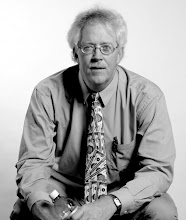Aztec Ruins is an historic site featuring Anasazi ruins that date back to 900 a.d.
Aztec Ruins features the third largest ceremonial kiva in the southwestern United States. A kiva was a place for community members to gather for prayer or song. The Great Kiva at Aztec was completely restored in the 1930s so visitors can see what it may have looked like to its builders and residents.



After a quick lunch at a local fast food restaurant, the group stopped at the flea market in Shiprock, New Mexico, back on the Navajo Nation.
While others shopped, Ben Strand continued his search for agates.
On the way back to Tsaile, Arizona, the group stopped at Shiprock for hiking, climbing and photos. By mid-afternoon, the area had some sunshine, even though clouds are visible in the background as a storm system continued to move east.
Robbie Christiano is now also hooked on searching for agates... thanks, Ben.


Some of the group went back to the residence hall at Diné College to work on their projects, while others drove to nearby Chinle, Arizona, for a nice restaurant meal and to get some groceries.
The Winona State students have been together for more than two weeks here on the Navajo Nation -- longer when you consider the ITV classes held before the fieldwork portion of the class began. The group is working well together. Still, some stress is showing, as the group knows their time on the Navajo Nation is nearing its end.
For the most part, the materials for their documentary film are collected. There's still some B-Roll to shoot in the coming days, and lots of work on scripts, editing, narrations and title-credit slides.
Creating a well-done, accurate and respectful documentary film is hard work. The students can tell you, they are considering every detail and doing their best to get it right, so they can be proud to show these films to their elders at the premiere events this fall.
Many people think once the film is all gathered for a film like this the hard work is done. In reality, this is when the hard work of editing begins. In most cases, the groups have collected more than three hours of source video, plus hundreds of still images. Now they must create an outline for a narrative story and find a way to pare all that material down into a cohesive film of about 20 minutes. It's challenging, but rewarding, work.



























No comments:
Post a Comment